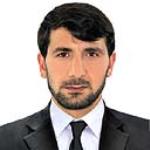6
|
| |
|
Population (?) |
745,000 [2] |
|
58,584 km² | |
|
{{{time_zone}}} | |
Helmand (Pashto: هلمند) is one of the 34 provinces of Afghanistan. It is in the south-west of the country. Its capital is Lashkar Gah. The Helmand River flows through the mainly desert region, providing water for irrigation.
The population is 745,000 and the surface area is 58,584 square kilometres. The population is largely Pashtun, with Baloch Brahui and Tajik[1] minorities who are primarily resident in laskargah .
The current governor is Gulab Mangal (since March 2008).
Helmand was the center of a
More recently the American USAID program has contributed to a counter-narcotics initiative called the Alternative Livelihoods Program (ALP) in the province. It pays communities to work to improve their environment and economic infrastructure as an alternative to Opium poppy farming. The project undertakes drainage and canal rehabilitation projects. In 2005 and 2006 there have been problems in getting promised finance to communities and this is a source of considerable tension between the farmers and the Coalition forces.
A view of Sangin
It was announced on January 27, 2006 in the British Parliament that a NATO International Security Assistance Force (ISAF) would be replacing the US troops in the province as part of Operation Herrick. The British 16th Air Assault Brigade would be the core of the force in
As of Summer 2006,
In Autumn 2006, British troops started to reach "cessation of hostilities" agreements with local Taliban forces around the district centres where they had been stationed earlier in the summer [3]. Under the terms of the agreement, both sets of forces will withdraw from the conflict zone. This agreement from the British forces implies that the strategy of holding key bases in the district, as requested by Hamid Karzai, is essentially untenable with the current levels of British troop deployment. The agreement is also a setback for Taliban fighters, who were desperate to consolidate their gains in the province, but are under heavy pressure from various NATO offensives.
News reports identified the insurgents involved in the fighting as a mix of Taliban fighters and warring tribal groups, primarily the Ishakzai and Alikozai, who are heavily involved in the province's lucrative opium trade [4].
Fighting continued throughout the winter, with British and allied troops taking a more pro-active stance against the Taliban. Several operations were launched including the more recent Operation Silicone at the start of spring. On May 12, 2007, Mullah Dadullah, one of the Taliban's top commanders, along with 11 of his men were killed by NATO and Afghan forces in
On May 8, 2007, between 21 and 40 civilians were killed by
Helmand has a southern border with the Balochistan
Cities
· Sangin
Districts
Districts of
· Baghran
· Dishu
· Garmsir
· Gerishk
· Kajaki
· Lashkargah (district)
· Nad Ali
· Nawzad
· Sangin
· Washir
Herat Province
|
| |
|
Herat | |
|
Population (2002) |
1,182,000 |
|
54,778 km² | |
|
{{{time_zone}}} | |
Herat (Persian: هرات) is one the 34 Provinces of Afghanistan; together with Badghis, Farah, and Ghor provinces, it makes up the north-western region of the country. Its primary city and administrative capital is also named Herat.
Overview
The province was one of the first major battlegrounds in the Soviet invasion of Afghanistan, and remained an active area of guerrilla warfare throughout, with local military commander and mujahideen Ismail Khan leading resistance to Soviet rule from 1979 until the Soviet withdrawal in 1989 (see the article on the city of Herat for further details). When the Soviets withdrew, Ismail Khan became the governor of the province, a position he remained until the Taliban took control of the province in 1995. Following the ousting of the Taliban in 2001 by the US and coalition forces as well as the Afghan Northern Alliance, Khan once again became governor of
The province was ruled more or less autocratically by Khan, despite some attempts by the interim central government (headed by Hamid Karzai) to weaken the power of local strongmen. Khan's rule has engendered some controversy, though
In March 2003, the Endowment and Islamic Affairs Department of the provincial government began steps to restrict what it saw as un-Islamic vices, on March 1, 2003 banning the sale and public screening of movies and the performance of music in public, and on March 5, 2003 banning the viewing of movies entirely, as well as the possession and sale of satellite dishes.
Map of
Radio Free Afghanistan (an extension of the
The Friday Mosque in the city of
A verbal war of words followed, with local journalists protesting angrily at what they read as a threat to use violence against dissenting journalists. President Karzai issued several statements largely siding with the journalists and expressing concern at the situation. This culminated in Khan ordering Behzad to leave the province permanently, despite his being a native of the city of
Khan backed down, claiming to have always supported journalistic freedom, and chalking the entire incident up to a misunderstanding. He released a statement saying, "the recent event that occurred was the result of a misunderstanding, and I hope it will not happen again. We are not against any Afghan or foreign journalist, and the reporters can be assured of their safety in our town, and can report on life in this country any way they wish." Behzad returned to
The current governor of the province (as of January 2007) is Sayed Hussain Anwari, a former Minister of Agriculture and governor of Kabul Province.
] Districts
Districts of
- Adraskan District
- Chishti sharif District
- Farsi District
- Ghoryan District
- Gulran District
- Guzara District
- Injil District
- Karukh District
- Kohsan District
- Kushk District
- Kushki Kuhna District
- Obe District
- Pashtun Zarghun (formerly Foshanj) District
- Shindand (formerly Sabzwar) District
- Zinda Jan District
- Herat (city)
 تيمورشاه الفت
تيمورشاه الفت